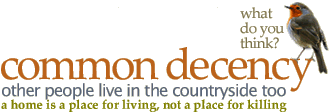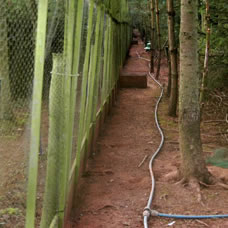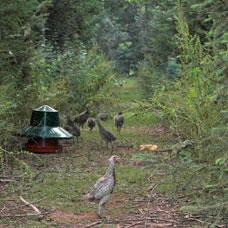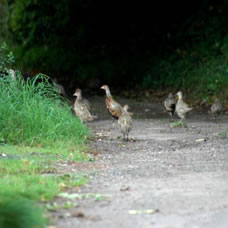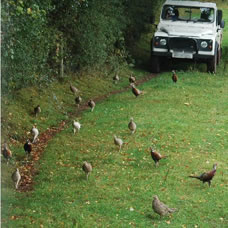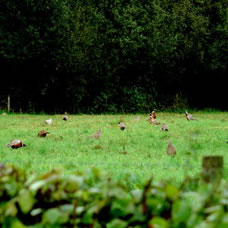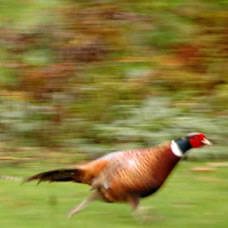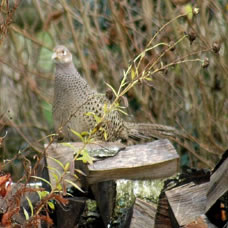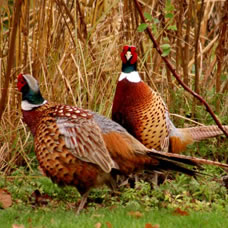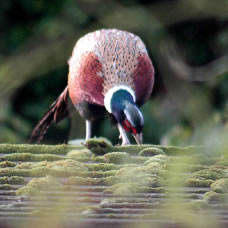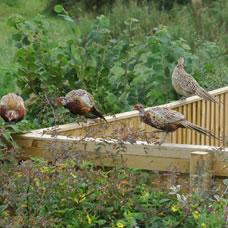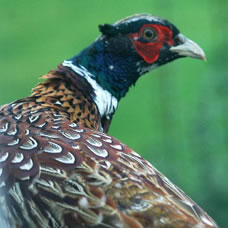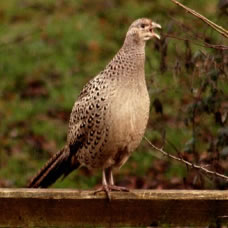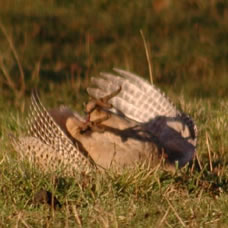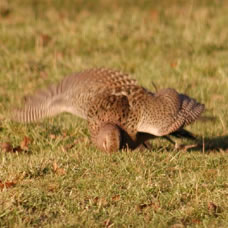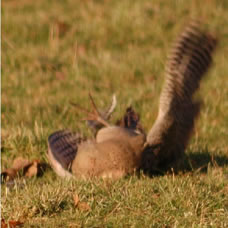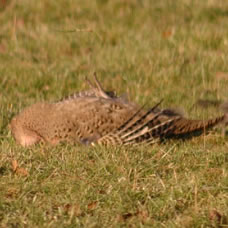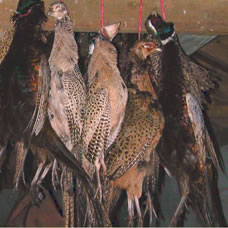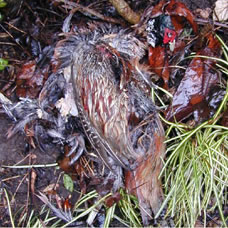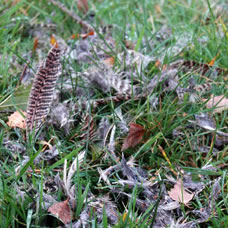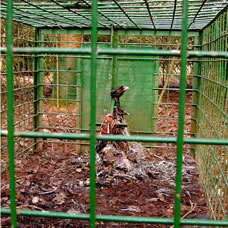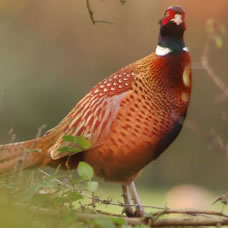
A cock pheasant, seen through my cottage window. It is there, so a human being can experience pleasure killing it, here, at my home.
The pheasant is a large decorative bird which, like all creatures, has its own characteristics. Understanding these explains why it has become a living target.
Pheasants do not arrive by courier on a shoot day, nor are they native British birds. Pheasants are bred in captivity and put into the countryside in the summer prior to being shot in the autumn and winter.
Juvenile pheasants, known as poults, are initially put into pens: large static, netted enclosures hidden in woods. Of the 35(1) million bred each year, about two thousand are released in just this one shoot around my home.
At the bottom of my garden there is a 1.3 acre pen. Round the perimeter of the six-foot net walls is a low electric wire fence. Inside are hoses and plastic containers for food and water. There is a second pen further along the meadow which is approx 2.6 acres.

The pheasants are put into the pens in July
Bewildered young pheasants in the lane in front of the cottage and in the field, being rounded up beneath a bedroom window.
Although pheasants are set free, to make them wild like the robin and wren, they are unable to survive without human help and humans cannot shoot them without them being free. So despite their being res nullius – nobody's property, humans feed them, to control where they go and to make them strong enough to fly over high trees.
Pheasants are ground birds. They walk. When they are disturbed, they run. They will fly if startled, but low, over what is in the way, to reach cover, into which they melt. Despite all the hundreds, thousands of pheasants which have surrounded my home in the last decade , I have never seen a pheasant fly high in the sky unless forced to do so.
They are nervous birds, easily alarmed by sound and movement. If they are startled when I walk down the garden, they rise rapidly, in a squawking flurry to the nearest cover – the other side of the hedge. But if I walk quietly and slowly, they walk before me and hide in the flower beds relying on their other form of defence – camouflage. The effect of their blending colouring is clearly shown in these two pictures.
Hundreds of pheasants surround my home. Their numbers, startling proximity and squawking cacophony stretch tolerance and sensibility to breaking point.

Feeders are put in the SSSI meadow in August to draw the pheasants out of the pens.

More feeders are put out in September, drawing the pheasants further away to the cover crops on the other side of the cottage.
I was more upset than I thought I would be when I saw this hen die. She landed on her back and tried so hard to get up, while the gun shot another one, a cock, which was then struck to stop it flapping.
Pheasant costs (approximate):
£3.50(1) each poult, £35-£40(1) each to shoot, £0.58 each dead body(2) and £5.00 each retail.
Pheasant numbers per year:
35 million(3) are bred (some references say even more) 40% perish, 7% road kill, 37% shot, 16% survive.(4)
The aftermath of a pheasant shoot.
- Shooting Gazette, July 2012, 51-52.
- Sporting Gun, November 2010, 88.
- Field Magazine, June 2011, 90.
Livestock in UK 2011 was 9.9 million cattle and calves. 4.4 million pigs. 32 million sheep and lambs and 102 million poultry. Defra 30 May 2012. http://www.defra.gov.uk/statistics/files/defra-stats-foodfarm-landuselivestock-june-statsrelease-uk-120530.pdf - Game and Wildlife Conservation Trust released pheasant fate report. http://www.gwct.org.uk/research__surveys/species_research/birds/pheasant/249.asp






